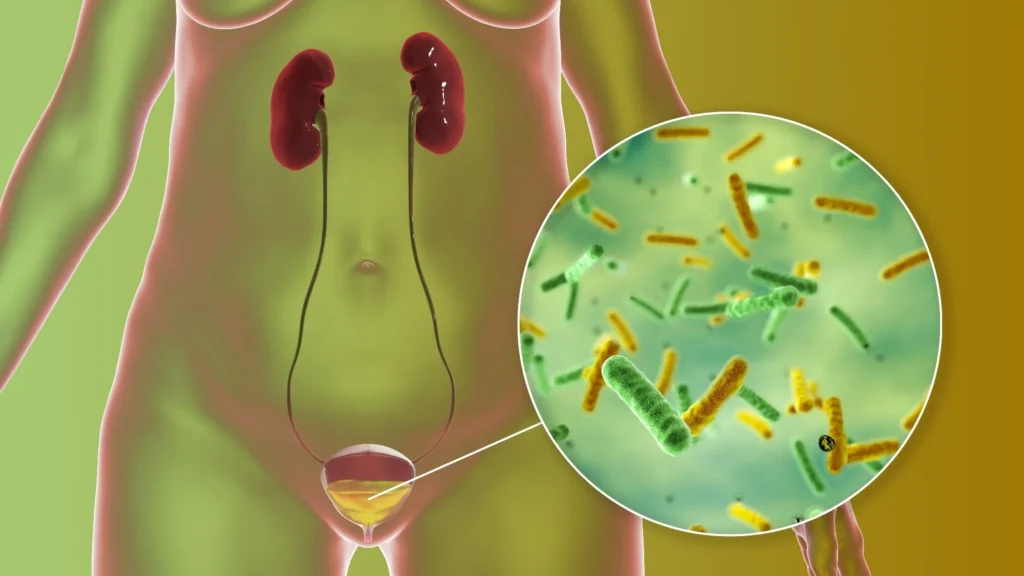A bacterial urinary tract infection (UTI) is a common but serious condition that affects millions worldwide. UTIs occur when bacteria invade the urinary system, causing infection in the bladder, kidneys, ureters, or urethra. If left untreated, these infections can lead to severe complications, including kidney damage. In this guide, we will delve into the causes, symptoms, treatment options, and preventive measures for bacterial UTIs, helping individuals manage and prevent this prevalent condition effectively.

Understanding the Urinary Tract
The urinary tract is a complex system consisting of the kidneys, ureters, bladder, and urethra. Each component plays a crucial role in filtering waste from the blood and eliminating it from the body through urine. When bacteria enter the urinary tract, they can disrupt this process and cause infection.
What is a Bacterial Urinary Tract Infection?
A bacterial urinary tract infection occurs when harmful bacteria enter the urinary tract and multiply. The most common bacteria responsible for UTIs are Escherichia coli (E. coli), which normally resides in the intestines but can travel to the urinary tract.
Types of Urinary Tract Infections
- Cystitis: Infection of the bladder.
- Urethritis: Infection of the urethra.
- Pyelonephritis: Infection of the kidneys, often more severe and may require hospitalization.
Causes of Bacterial UTIs
Bacterial UTIs are primarily caused by poor hygiene practices, sexual activity, and anatomical factors that make the urinary tract more susceptible to infection. The following are some common causes:
- Poor Hygiene: Inadequate wiping, especially in females, allows bacteria from the anus to travel to the urethra.
- Sexual Activity: Sexual intercourse can introduce bacteria into the urethra, increasing the risk of infection.
- Urinary Retention: Delaying urination can cause bacteria to multiply in the bladder.
- Catheter Use: Long-term catheterization can introduce bacteria into the urinary tract.
- Weakened Immune System: Conditions such as diabetes or immunosuppressive therapies increase the likelihood of bacterial invasion.
- Pregnancy: Hormonal changes and physical changes to the urinary tract make pregnant women more prone to UTIs.
Symptoms of a Bacterial Urinary Tract Infection
The symptoms of a bacterial UTI can vary depending on the location and severity of the infection. Common signs include:
- Frequent Urination: A strong and frequent urge to urinate, even if the bladder is empty.
- Painful Urination (Dysuria): A burning sensation when urinating.
- Cloudy or Blood-tinged Urine: The urine may appear cloudy or contain traces of blood.
- Pelvic or Lower Abdominal Pain: A feeling of discomfort or pressure in the lower abdomen.
- Fever and Chills: If the infection has spread to the kidneys, systemic symptoms like fever may occur.
- Fatigue or Malaise: A general sense of being unwell, often accompanied by chills and fever.
Severe Symptoms to Watch For
- Back Pain: Pain in the lower back or side may indicate kidney involvement.
- Nausea or Vomiting: Often occurs with kidney infections.
- Confusion: Especially common in elderly individuals with severe UTIs.
Diagnosis of Bacterial Urinary Tract Infections
If a UTI is suspected, a healthcare provider will perform diagnostic tests to confirm the infection and determine its severity. These tests include:
- Urinalysis: A sample of urine is examined for signs of infection, such as the presence of white blood cells, red blood cells, or bacteria.
- Urine Culture: This test helps identify the specific bacteria causing the infection and determines the most effective antibiotics.
- Imaging Tests: If there is a concern that the infection has spread or if UTIs recur frequently, imaging tests such as an ultrasound or CT scan may be conducted.
Treatment of Bacterial Urinary Tract Infections
The standard treatment for UTIs involves the use of antibiotics to kill the bacteria causing the infection. The choice of antibiotic depends on the specific type of bacteria and the severity of the infection. Common antibiotics for UTIs include:
- Trimethoprim-sulfamethoxazole (Bactrim)
- Nitrofurantoin (Macrobid)
- Ciprofloxacin
- Levofloxacin
Duration of Treatment
The length of antibiotic therapy typically lasts from 3 to 7 days for uncomplicated infections. However, more severe infections may require longer courses of antibiotics, and hospitalization may be necessary for those with kidney infections.
Pain Management
To alleviate the discomfort associated with UTIs, healthcare providers may recommend:
- Phenazopyridine: An over-the-counter medication that numbs the urinary tract and relieves burning sensations.
- Hydration: Drinking plenty of fluids helps flush out the bacteria from the urinary system.
Preventing Bacterial Urinary Tract Infections
While it may not always be possible to prevent a UTI, there are several measures you can take to reduce the risk of infection:
1. Maintain Good Hygiene
- Always wipe from front to back after using the bathroom.
- Keep the genital area clean and dry to prevent bacterial growth.
2. Stay Hydrated
- Drinking plenty of water flushes bacteria from the urinary tract and reduces the risk of infection.
3. Urinate When Needed
- Do not delay urination when you feel the urge. This helps prevent bacteria from multiplying in the bladder.
4. Empty Your Bladder After Sexual Activity
- Urinating after intercourse can help flush out bacteria introduced during sexual activity.
5. Wear Loose, Cotton Underwear
- Cotton underwear allows for better airflow, reducing the chances of bacterial growth in the genital area.
6. Avoid Irritants
- Avoid using scented soaps, douches, or sprays in the genital area, as these can irritate the urethra and increase the risk of infection.
When to See a Doctor
It is essential to seek medical attention if you experience symptoms of a UTI, especially if they are accompanied by fever, chills, or back pain. Early intervention can prevent complications, such as kidney damage or sepsis, and ensure a quicker recovery.

